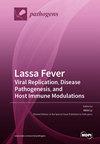克里米亚-刚果出血热病毒:欧洲新出现的威胁,以西班牙的流行病学为重点
IF 3.3
3区 医学
Q2 MICROBIOLOGY
引用次数: 0
摘要
克里米亚-刚果出血热(CCHF)是一种蜱媒疾病,由蜱属(Hyalomma)传播,由奈洛韦病毒科(Nairoviridae)的一种病毒引起。病毒可在人体内产生不同的临床表现,从无症状到轻微疾病,或产生出血热,死亡率约为 30%。病毒的致病性和缺乏有效的治疗方法或预防疫苗,使其成为公共卫生关注的病原体。其主要传播途径是蜱虫叮咬,因此最容易受到感染的人群。另一个风险群体是兽医和畜牧业者,他们会接触到大多数无症状动物的血液和其他体液。最后,由于第一阶段的症状不典型,因此存在鼻腔感染的风险。该病流行于非洲、巴尔干半岛、中东和北纬 50 度线以南的亚洲国家,北纬 50 度线是主要病媒的地理界限。最近,在以前没有出现过这种病毒的欧洲地区也发现了本地病例。希腊、保加利亚和西班牙都发现了人类病例。西班牙是受影响最严重的国家之一,自 2013 年以来共发现了 17 例本地病例。在法国等其他国家,病毒存在于蜱虫和动物体内,但尚未传播给人类。在这些国家建立高质量的流行病学监测系统对于避免该病毒扩散到新地区并限制现有病例的影响至关重要。本文章由计算机程序翻译,如有差异,请以英文原文为准。
Crimean-Congo Hemorrhagic Fever Virus: An Emerging Threat in Europe with a Focus on Epidemiology in Spain
Crimean-Congo hemorrhagic fever (CCHF) is a tick-borne disease transmitted by ticks of the genus Hyalomma and caused by a virus of the Nairoviridae family. In humans, the virus can generate different clinical presentations that can range from asymptomatic to mild illness or produce an hemorrhagic fever with a mortality rate of approximately 30%. The virus pathogenicity and the lack of effective treatment or vaccine for its prevention make it an agent of concern from a public health point of view. The main transmission route is tick bites, so people most exposed to this risk are more likely to become infected. Another risk group are veterinarians and livestock farmers who are in contact with the blood and other fluids of animals that are mostly asymptomatic. Finally, due to its first phase with a non-characteristic symptomatology, there exists a risk of nosocomial infection. It is endemic in Africa, the Balkans, the Middle East, and those Asian countries south of the 50th parallel north, the geographical limit of the main vector. Recently, autochthonous cases have been observed in areas of Europe where the virus was not previously present. Human cases have been detected in Greece, Bulgaria, and Spain. Spain is one of the most affected countries, with a total of 17 autochthonous cases detected since 2013. In other countries, such as France, the virus is present in ticks and animals but has not spread to humans. A high-quality epidemiological surveillance system in these countries is essential to avoid the expansion of this virus to new areas and to limit the impact of current cases.
求助全文
通过发布文献求助,成功后即可免费获取论文全文。
去求助
来源期刊

Pathogens
Medicine-Immunology and Allergy
CiteScore
6.40
自引率
8.10%
发文量
1285
审稿时长
17.75 days
期刊介绍:
Pathogens (ISSN 2076-0817) publishes reviews, regular research papers and short notes on all aspects of pathogens and pathogen-host interactions. There is no restriction on the length of the papers. Our aim is to encourage scientists to publish their experimental and theoretical research in as much detail as possible. Full experimental and/or methodical details must be provided for research articles.
 求助内容:
求助内容: 应助结果提醒方式:
应助结果提醒方式:


